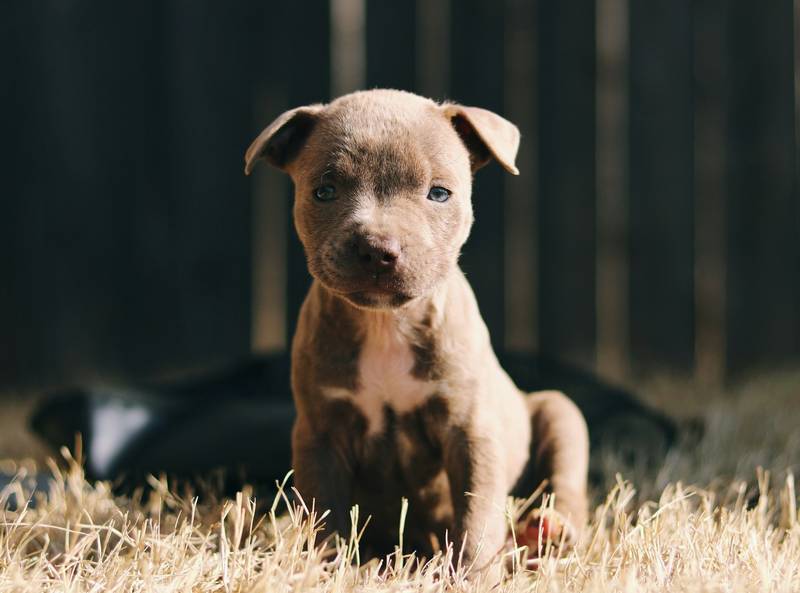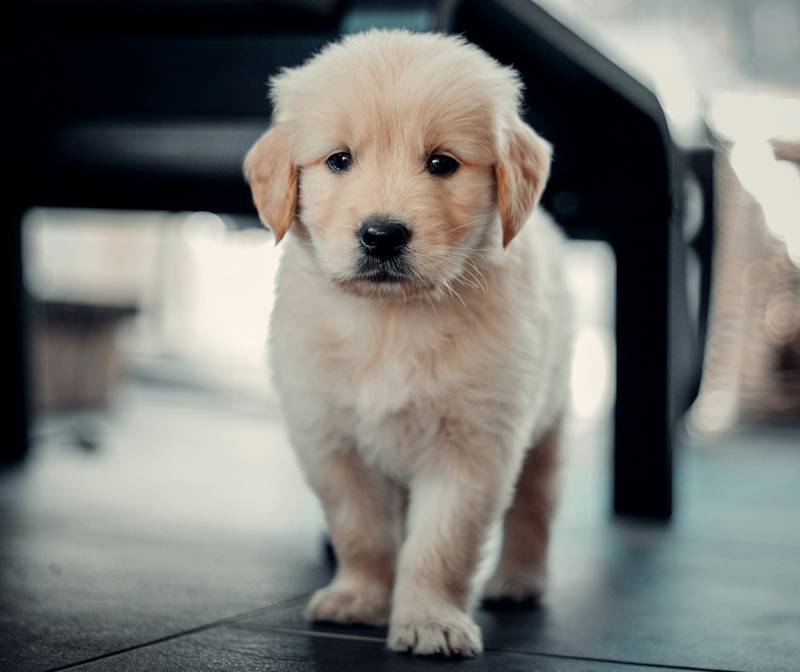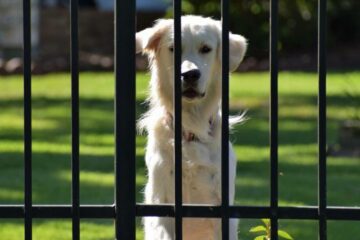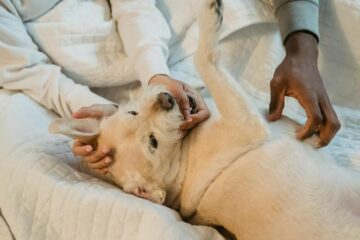My Puppy Is Bullying My Older Dog! What to Do + Stop Growling!
“My puppy is bullying my older dog!” Noticing your new puppy growling at the older dog can be concerning and surprising. It’s not something you expect, especially when the hope is for them to be fast friends. This behavior typically stems from things such as the puppy trying to assert dominance or simply not understanding proper dog etiquette yet.
In this article, we’ll dive into why your puppy might be displaying such behavior towards your older dog, including growling and what might appear to be bullying. We’ll explore the dynamics between a new puppy and an older dog, and most importantly, we’ll provide you with tips on how to stop the new puppy from growling and ensure both dogs can coexist peacefully and happily.
My Puppy Is Bullying My Older Dog

When a puppy is bullying an older dog, it might manifest as the younger dog playing too roughly, stealing toys, or food, or not respecting the older dog’s space. It’s important to understand that puppies are learning about their environment and testing boundaries, which includes their social interactions with other dogs.
Puppy Bullying Older Dog: What’s Happening?
A puppy bullying an older dog typically stems from a combination of a lack of appropriate outputs for their high energy levels, a lack of understanding of social cues, and the puppy’s attempt to explore its place within the household hierarchy.
Puppies may not yet recognize the older dog’s signals of discomfort or disinterest in playing. This behavior is usually not aggressive but rather overly enthusiastic or assertive attempts at interaction.
New Dog Bullying Old Dog
When introducing a new dog into a home with an existing older dog, it’s crucial to supervise their interactions closely. A new dog might try to assert dominance or may simply be too boisterous for the older dog.
Consistent training, patience, and positive reinforcement are key to helping both dogs understand acceptable behaviors and boundaries within their new shared environment.
Puppy Bullies Older Dog: How to Stop
To address a puppy bullying an older dog, consider implementing the following strategies:
- Supervised Interactions: Monitor playtime to ensure it remains safe and positive for both dogs. When play goes well, be sure to give both dogs plenty of praise, but interrupt if play escalates too far or if the older dog seems distressed.
- Separate Resources: Provide separate beds, toys, and feeding areas to reduce competition and resource guarding.
- Training: The “Settle” command is great as it teaches your puppy to relax and calm down on cue. Start in a calm environment. Wait for a moment when your puppy is lying down and relaxed, then say “Settle” and give them a treat. Practice this regularly, using the command “Settle” each time your dog naturally settles down. Once your dog starts to associate the command with the action, use it during moments of excitement. Reward them for calming down after hearing the command.
Ensuring both dogs have their own safe spaces and implementing a routine can also help manage and mitigate bullying behavior. With time, patience, and proper training, most puppies will learn to coexist peacefully and respectfully with their older canine companions.
It’s important to remember, however, that any underlying behavioral issues (overexcitement, dominance, aggression, etc.) that were contributing to all of this will still be present. And until you address those, any positive changes you see will only be temporary.
“Well, how do I make these changes last?”
By getting your puppy to truly choose to follow your direction, that’s how. I tried many times to write out how you can do that before deciding it made more sense to just link you to the free video series that explains it better than I’d ever be able to.
The series is by a man named Dan who is one of the world’s leading dog obedience trainers. In it, he teaches you how to put an end to things like your puppy bullying your older dog and all other misbehavior using his fast and easy-to-follow methods.
In the first video, Dan will reveal to you why the two most common methods of dog training only doom you to failure. You can watch the video now by clicking here. Follow the proven system he’ll show you in his series and you’ll never have to spend another second worrying about your new dog bullying your old dog ever again!
New Puppy Growling at Older Dog

When a new puppy growls at an older dog, it can be concerning and confusing for pet owners. This behavior may arise from fear, a desire to play, or an attempt to establish a social hierarchy. Understanding the root cause is important for addressing this behavior effectively.
Why Is My Puppy Growling at Older Dog?
Your puppy is growling at your older dog for a variety of reasons, including feeling threatened, trying to initiate play, or navigating their social standing within your home. Growling can be a normal part of canine communication, but it’s important to distinguish between playful barks and growls and those signaling discomfort or fear.
Observing the body language accompanying the growl—such as a wagging tail, play bows, or stiff posture—should give you a better idea of your puppy’s emotions and intentions. Learning the “Settle” command can be very important when these situations turn bad; learn it now in the first section.
Younger Dog Bullying Older Dog
A younger dog bullying an older dog can sometimes include growling as part of a broader pattern of bullying behavior. The younger dog may attempt to dominate or control the older dog. This can include not only growling but also behaviors like pushing past the older dog, stealing toys, or food, and excessive rough play.
Stop New Puppy Growling at Older Dog
To foster a peaceful coexistence between your new puppy and older dog, consider the following strategies:
- Gradual Introductions: Slowly introduce the puppy to the older dog in neutral spaces to reduce territorial tensions.
- Supervised Interactions: Monitor their interactions closely, stepping in to calm situations if play becomes too rough or if either dog shows signs of stress.
- Training “Calm” Command: Teach your puppy the “calm” command to encourage peaceful behavior. Start by getting your puppy’s attention with a treat, say “calm,” and reward them when they settle down. This command can help manage your puppy’s excitability and teach them to associate calm behavior with positive outcomes.
Ensuring both dogs have their own space and time for individual attention can also help alleviate tensions. With patience and consistent training, most puppies learn to interact more gently with their older companions, leading to a harmonious household.
I’m sure you’re ready to get going now that you have all of your questions about your puppy growling at your older dog answered, so I’ll let you begin. Best wishes, and thank you for reading our article “My Puppy Is Bullying My Older Dog! What to Do + Stop Growling!”.





